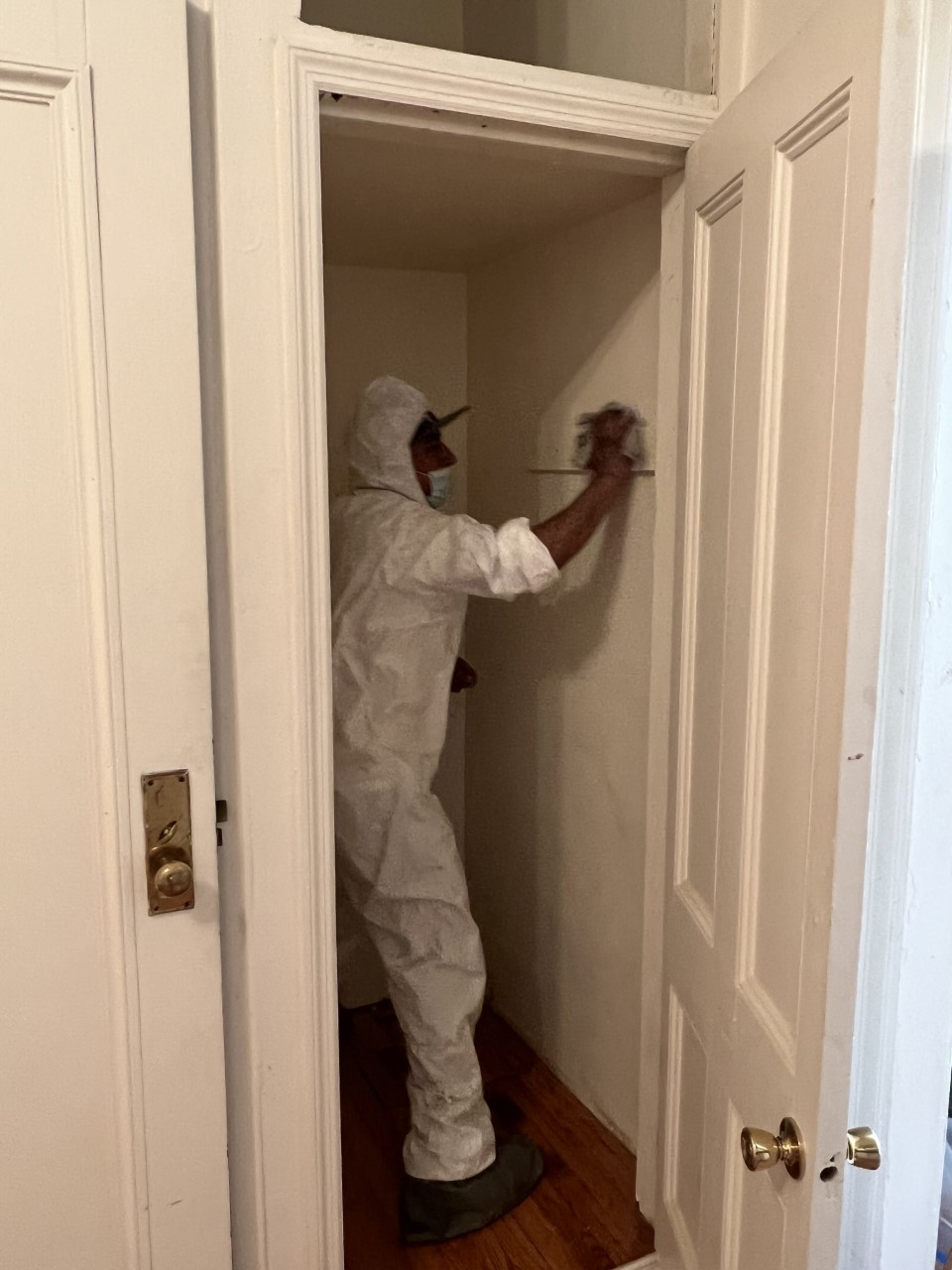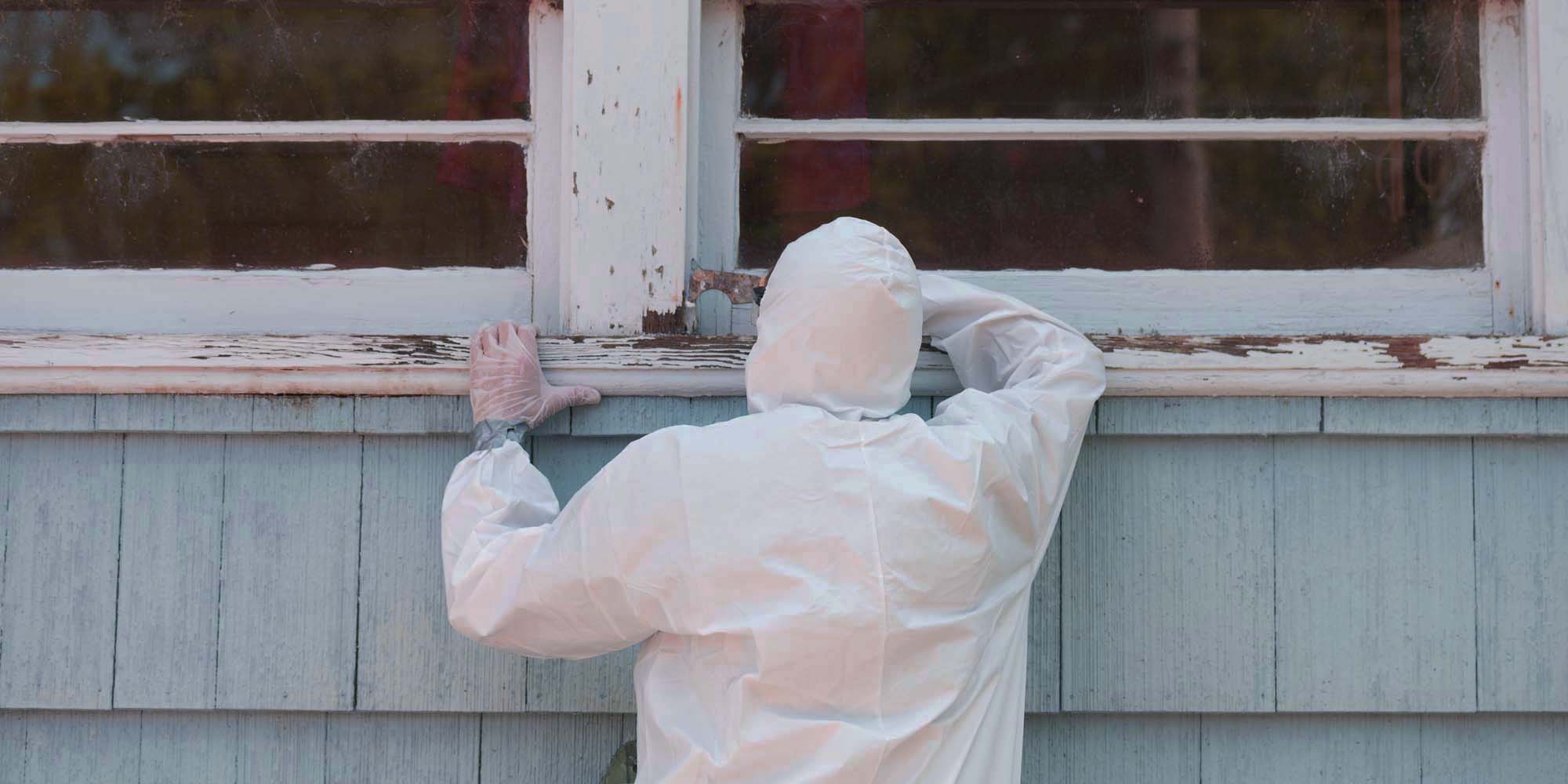Lead Paint Removal Service-- NYC's Trusted Solutions for Lead Safety And Security
Lead Paint Removal Service-- NYC's Trusted Solutions for Lead Safety And Security
Blog Article
Comprehensive Overview on Effective Lead Offense Elimination Strategies
In the world of ecological security, attending to lead violations requires a careful and structured strategy. This detailed overview begins by highlighting the crucial first steps of identifying lead dangers via innovative evaluation and testing approaches. The overview elaborates on the significance of sticking to strict safety methods during the removal procedure, including the use of correct PPE and isolating impacted areas.
Identifying Lead Risks
Determining lead threats is an essential first action in reducing the risks connected with lead exposure. Lead, a poisonous steel, can be present in different ecological mediums, consisting of paint, soil, water, and dirt. It poses serious wellness dangers, particularly to children and expectant females, resulting in neurological damage and developing hold-ups. As a result, exact identification of potential lead sources is vital for reliable removal.
The first stage in determining lead risks entails recognizing usual lead resources within the built environment. Frameworks developed prior to 1978 are especially at risk because of the widespread usage of lead-based paint during that period. In addition, soil contamination can happen from weakening exterior paint, commercial discharges, or historic use leaded fuel.
An additional substantial resource is lead piping and pipes components, which can leach introduce alcohol consumption water. Customer goods such as toys, porcelains, and imported items may likewise include hazardous lead levels. Significantly, work-related settings and pastimes involving lead can track pollutants into homes.
Assessment and Screening
When resolving lead threats, efficient analysis and testing are paramount. This vital action ensures the identification and metrology of lead existence, thus directing succeeding remediation initiatives. Preliminary assessment generally includes a visual assessment to determine possible lead resources, such as degrading paint or contaminated dust. This is matched by even more rigorous testing methodologies to identify the extent of contamination.

Dust wipe tasting is another critical strategy, particularly in residential settings. By gathering examples from floors, windowsills, and other surface areas, this approach offers understandings right into possible exposure threats. Dirt testing around structure borders is crucial to discover lead contamination that can present risks, specifically to children.
Safe Elimination Procedures
Upon finishing extensive evaluation and screening, applying safe removal procedures is the next important stage in resolving lead risks. This procedure makes sure that lead-contaminated materials are efficiently and safely removed, lessening threat to both workers and citizens. websites The primary step includes isolating the affected area making use of plastic bed linen and appropriate securing techniques to stop the spread of lead dust.
Workers need to don proper personal safety devices (PPE), consisting of respirators, handwear covers, and disposable coveralls, to alleviate direct exposure. Using specialized tools and damp approaches, such as wet sanding or making use of HEPA-filtered vacuums, lowers the diffusion of lead bits. It is critical to prevent completely dry sanding or unpleasant blasting, as these approaches can generate dangerous lead dirt.
Garbage disposal is an additional crucial part; all infected products need to be safely nabbed and classified according to EPA and regional guidelines. Furthermore, complete cleaning of the workplace with HEPA vacuums and wet cleaning makes certain the removal of recurring go to this website lead particles.
Post-Removal Confirmation

Verification of effective lead removal, referred to as post-removal confirmation, is essential to make sure the safety and security and habitability of the remediated area. This procedure entails a collection of thorough analyses and examinations created to spot any kind of recurring lead particles that may position wellness risks. The preliminary step usually consists of an aesthetic evaluation to assess the conclusion and high quality of the remediation job. This examination makes sure that all known resources of lead have been resolved and that no noticeable signs of contamination remain.
Complying with the aesthetic assessment, ecological sampling is performed. This entails gathering dirt, soil, and often water examples from the remediated area. Accredited labs analyze these samples to determine lead degrees, guaranteeing they drop listed below the security limits developed by regulative bodies such as the Environmental Security Company (EPA)
On top of that, air top quality screening might be done to detect air-borne lead particles, especially in cases where considerable lead-based paint removal or renovation has occurred. The results of these tests provide quantitative information validating that the lead degrees are within permissible restrictions.
Eventually, post-removal verification works as a vital checkpoint, confirming the efficiency of the lead reduction efforts and guarding the health of residents and site visitors.
Precautionary Steps and Upkeep

A vital preventive action includes using lead-safe accredited professionals for any type of restoration, repair service, or paint activities. These specialists are learnt methods that reduce lead dust and particles. Furthermore, maintaining colored surface areas to avoid chipping or peeling off is essential, as deteriorating paint can launch lead fragments into the setting.
Educational efforts targeting residential or commercial property owners and renters pertaining to the dangers of lead and the relevance of reporting any type of potential threats can better improve preventative initiatives. Routine cleaning utilizing HEPA vacuum cleaners and wet wiping strategies can substantially minimize lead dirt buildup.
Conclusion
In summary, reliable lead infraction elimination demands a careful method including comprehensive assessment, precise screening, and strict elimination treatments. Making certain safety and security through correct seclusion and personal protective tools continues to be paramount. Post-removal verification using ecological tasting and air top quality testing corroborates conformity with established safety requirements. Moreover, ongoing evaluations and upkeep are important to minimize future lead dangers, therefore safeguarding public health and making sure sustained compliance with governing requirements.
Report this page